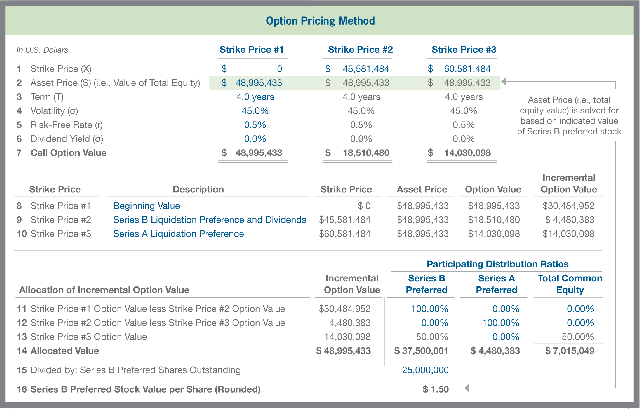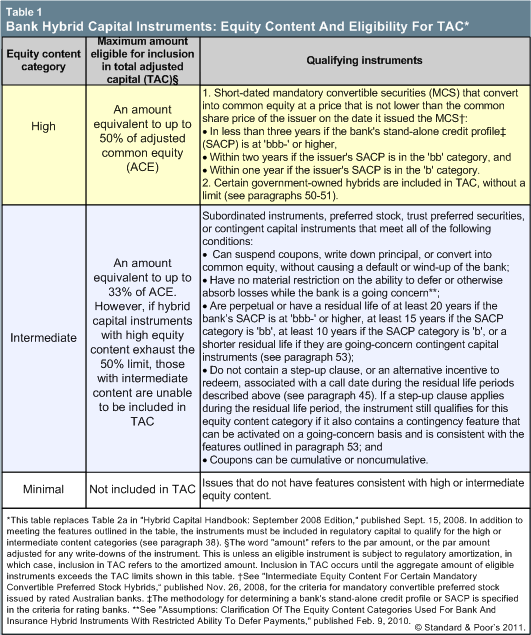Hybrid Equity A New Approach to Equity Compensation
Post on: 9 Апрель, 2015 No Comment

Page 1
ssrn.com/abstract=1395524
Hybrid Equity: A New Approach to Equity Compensation
By Marc Hodak
Journal of Applied Corporate Finance (Forthcoming)
Page 2
ssrn.com/abstract=1395524
Hybrid Equity: A New Approach to Equity Compensation
By Marc Hodak
Equity is a great way to reward managers. On top of providing some of the considration needed
to attract and retain needed talent, it can contribute greatly to the ongoing alignment of
management and shareholder interests. Until now, managers and boards have utilized what one
might call borrowed instruments, e.g. common stock or standard options, that they saw being
utilized in other contexts when they began rewarding their managers with equity. In order to
further encourage retention or bolster alignment, boards have layered various restrictions on these
instruments, and mixed and matched them according to taste or fashion. But the instruments
themselves have remained largely unchanged. In fact, as a result various accounting, regulatory,
and tax rules implemented over the years, these instruments have become quite entrenched to the
exclusion of others.
Unfortunately, both of these instruments pose certain well-understood limitations. These
limitations can be overcome by a new type of instrument, one designed specifically for the
purposes of executive compensation. In fact, a single instrument tailored to the specific needs of
a company could replace all other forms of equity-based compensation for that company, greatly
simplifying its compensation plans while enabling the firm to more optimally balance its
compensation governance requirements of retention, alignment, and cost control.
The problem with stock
The virtue of stock, aside from its familiarity, is that it creates dollar-for-dollar alignment
between managers and shareholders. This alignment comforts shareholders, and gives managers
a sense of participating in the growth of value that they help create. Ownership creates value
(Morck, Shleifer, and Vishny, 1988; McConnell and Servaes, 1990; Core and Larker, 2002).
The problem with stock begins with the fact that managers do not accept restricted shares versus
current cash in a dollar-for-dollar exchange; the restrictions on the stock and the lack of
diversification of managers forced to concentrate their portfolio in the company for which they
work undermine the marginal value of shares. At the same time, many critics are bothered by the
fact that no matter how poorly a company might perform, its managers will likely walk with away
some value from their shares as long as they stick around—what is derisively referred to as “pay
for stay.” (Durfee, 2006)
Page 3
Figure 1: Pay-for-performance using stock
To the extent one views this as a problem, “value all the way down” is an inherent aspect of the
fixed pay-for-performance leverage that otherwise makes stock desirable as an alignment tool.
One restriction sometimes imposed on stock awards to combat this perceived shortcoming is a
requirement to meet a threshold level of stock price performance before qualifying for the award,
or below which nominally awarded shares could be forfeited. This solution, however, trades off
the “value all the way down” problem for the bigger problem of performance-based cliff vesting,
whereby and incentive plan suddenly kicks in a significant reward for hitting a specific
achievement target.
Figure 2: Governance risk from performance-based cliffs
Page 4
In fact, shareholders experience far more governance risk in the area just before the cliff (see
Figure 2), where marginally better performance can create a relatively huge reward, than they do
from the possibility of relatively minor bonuses below some threshold, where rewards are already
diminished.
The problems with options
Since each option is worth much less than the share that underlies it, a manager might be offered
three or four options in lieu of a single share. This implicit exchange increases the upside
potential of the equity reward. Shareholders can benefit from this leveraged upside; it drives the
kinds of difficult decisions that are often required of managers in tough circumstances (Dial and
Murphy, 1994). More generally, this upside leverage contributes to executive wealth leverage,
i.e. the degree to which executive wealth varies with shareholder wealth in a given firm.
Companies with higher wealth leverage significantly outperform their industry competitors
(O’Byrne and Young, 2005). Nevertheless, options pose several problems that may significantly
counteract these benefits.
To begin with, options are a very inefficient form of compensation. The same restrictions and
lack of diversification that make stock worth less than cash make options worth 30 to 50 percent
less to managers receiving them than to they are to the shareholders issuing them (Hall and

Murphy, 2000; Meulbroek, 2001a). For example, if a Black-Scholes valuation implies that one
should give out three options in lieu of one share, in reality boards might need to offer four
options—33 percent more—to offer a value that managers would consider equivalent to the
foregone share. As a result of this “cost/value wedge,” a given number of options could, in
certain cases, turn out to be of too little value to the managers and too much cost to the
shareholders. This might be an appropriate or necessary cost for firms that are cash constrained,
especially for non-executive managers in an era of generally increasing share prices (Core and
Guay, 2001), but for strategic decision makers, the cost/value wedge should be seen as a
to the extent that managers can rebalance their personal portfolios.)
A second problem with options is that they provide an asymmetrical risk-reward profile relative
to that faced by shareholders. In some cases, this can create perverse incentives. For example,
mortgage traders who took large and increasing risks in a market they likely knew was
unsustainable were a significant source of the financial distress later faced by of their bank
Page 5
employers. They took those unsound risks because they would collect large rewards as long as
real estate values kept increasing, but could do no worse than collect their salary when the
markets finally turned, and only the shareholders would be left holding the bag. This “traders
option” is the dark side of encouraging risky decisions, and exists to some extent with all options.
(Carpenter, 2000, suggests a contrary view for senior managers exposed to considerable equity
variability, contending that they would offset the additional risk of incremental options by
managing for reduced risk in the underlying assets.)
Figure 3: Pay-for-performance using options
The biggest objections to standard options in their most common form, i.e. having an exercise
price equal to the market price of the stock on the date they are issued, arise from the fact that a
lot of things drive the share price aside from management actions. Investors don’t appreciate
their managers receiving a highly dilutive windfall mainly as a result of general bullishness in
their sector. Shareholders that have experienced such situations become warier of granting
options (Monks and Minow, 2008). On the flip side, the stock price can drop significantly for
reasons that have nothing to do with firm management. This presents the vexing question of what
to do with “underwater” options as a result of general sector or market weakness. In theory, the
value of these options is positive (Jin, Meulbroek, 2001), and still fluctuate with the value of the
stock, but in practice the incentive effects are largely lost. About 85 percent of all outstanding
executive options are underwater at this writing (Equilar, 2008). Companies that have relied on
options are facing significant retention and morale problems. The easy ways of dealing with this














